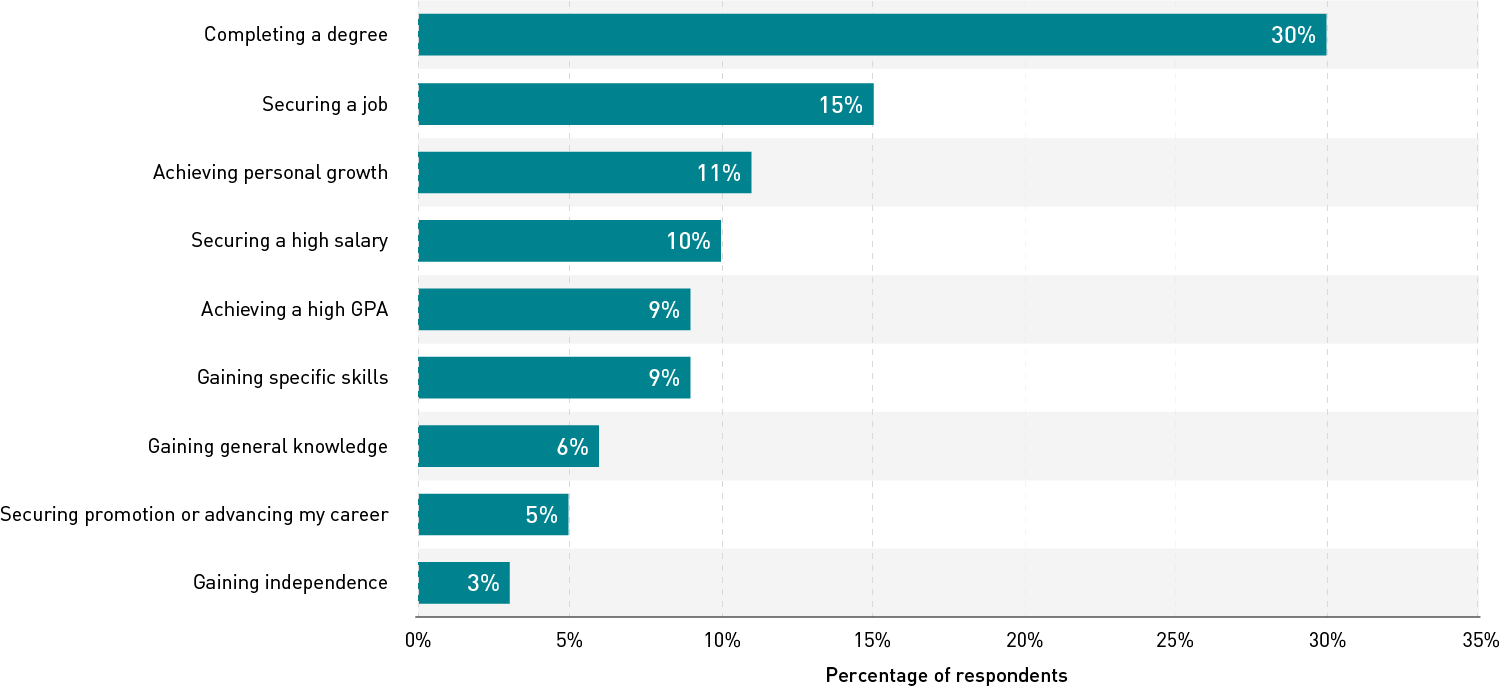Student Success
Supporting student success is a multifaceted endeavor. In keeping with previous EDUCAUSE research findings, almost a third (30%) of respondents indicated that completing a degree is the most important measure of success for their undergraduate experience (see figure 9). However, a degree is not the only measure of success. Other respondents indicated that their most important measure of success is to secure a job, achieve personal growth, secure a high salary, or meet another goal.

In response to an open-ended question asking how their institutions have helped them succeed, respondents described a wide range of institutional resources:
- Academic advisors and coaches
- Academic support such as tutors and writing centers
- Internships and other work experience
- Financial support such as tuition and textbook assistance
- Device loaner programs
- Flexible policies such as deadline extensions and family leave
- Hands-on and skills-based learning
- Career services such as counseling, career fairs, and interview preparation
- Social connection, friendships, and community
- Outreach such as emails and phone calls to "check in"
- Professional networking
- Online courses
- Extracurricular activities
Not all respondents feel supported by their institutions. Some respondents said their institution had done nothing to help them achieve success. Further, when asked about specific barriers to success, some respondents pointed to institutional practices and policies:
- Financial aid issues, loans, and the cost of attendance
- Inadequate access to technology such as internet, devices, and software
- Insufficient availability of courses due to scheduling or seat limits
- Campus closures due to weather or pandemic protocols
- Inadequate disability accommodations
- Inflexible instructors
- Classes only offered in non-preferred modalities
- Lack of support for social inequity related to age, race, gender
- Curriculum designed for passing tests rather than learning career skills
In addition to these institutional barriers, respondents described a number of nonacademic circumstances that hinder their success:
- Work schedules
- Time management, especially related to work/life balance
- Confidence, self-esteem, focus, and motivation
- Availability of transportation
- Time spent commuting
- Family caretaking responsibilities
- Mental and physical health
Understanding the barriers students face from both institutional and nonacademic situations will help institutional leaders design and redesign support systems, curricula, and learning environments.